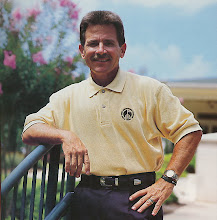Traffic damage on frozen turf areas usually occurs during periods of freezing or thawing. The most devastating situation occurs when the grass blades and the upper one-half to one inch of soil has thawed, but the ground beneath their level remains frozen. Traffic will create a shearing action of the roots, rhizomes, and crown tissues at this time. This is comparable to cutting the plant tissue from the underlying root system with a sod cutter. Complete kill of leaves, crowns, and rhizomes can occur if the temperatures soon drop below 20° F. Symptoms from this severe injury include whitish to dark brown leaves that may mat on the surface.
Below is a photo of a turf area with the frozen crystals on the leafblades. What we cannot see if the same frozen crystals inside the leafblade.
 Frost occurrence and starting time delays are very common in the spring and fall on golf courses on the North Shore of Chicago. Golfers may leave the heat and warmth of their homes on a cold morning ready to set onto the course and tee it up. Unfortunately, overnight temperatures that have dropped into the low to mid 30s deliver a sparking white layer of frost on many areas of the course. There can be evidence of frost on certain areas of the course when the ambient temperatures are even in the mid to higher 30s. This is because the news casters give reports that have reading taken 36 inches above the ground. In lower and shaded areas temperatures can varying by 3 to 5 degrees or more at ground level.
Frost occurrence and starting time delays are very common in the spring and fall on golf courses on the North Shore of Chicago. Golfers may leave the heat and warmth of their homes on a cold morning ready to set onto the course and tee it up. Unfortunately, overnight temperatures that have dropped into the low to mid 30s deliver a sparking white layer of frost on many areas of the course. There can be evidence of frost on certain areas of the course when the ambient temperatures are even in the mid to higher 30s. This is because the news casters give reports that have reading taken 36 inches above the ground. In lower and shaded areas temperatures can varying by 3 to 5 degrees or more at ground level. Foot or mower traffic can crush the frozen leafblades resulting in the ice crystals becoming fragmented and puncturing the cell walls within the leafblade and causing significant damage to the plant. For this reason we will occasionally have starting time delays. During frost occurrences, I have to make the proper decisions to protect your asset and also to get you onto the course as quickly as possible. A few minutes delay heavily outweighs months of damage.



No comments:
Post a Comment